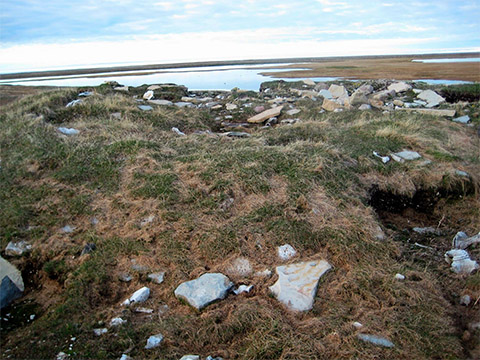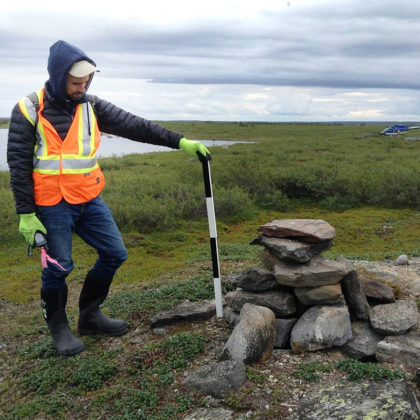
Foxe basin
Digging in the permafrost
 Some researchers get lucky. They don’t end up in the basement of a grey laboratory, on a shared desk. No, their work spaces look more like a holiday resort. This week part 4: Foxe Basin.
Some researchers get lucky. They don’t end up in the basement of a grey laboratory, on a shared desk. No, their work spaces look more like a holiday resort. This week part 4: Foxe Basin.Every year RUG postdoc Sean Desjardins travels to Foxe Basin, an area in the Canadian Arctic west of Greenland. The zooarcheologist stays there for five weeks or so, digging in the permafrost in an area that has been inhabited by Inuit for almost a thousand years. He searches for animal bones and other artefacts that can give him information on eating patterns of the Inuit, and the way they adapted to natural climate changes in the past.
‘Nothing can really prepare you for the Arctic. It’s overwhelming in so many ways: the landscape, the environment, the people, the look, the feel of it all. It’s visceral. Things that are actually miles away may look really close, your sense of time is altered. The 24 hours of daylight may get to you, but also these very open spaces, the big skies: it hits all of your senses.
Challenge
Many people, even other archaeologists, see the Arctic as this caricature of a cold and harsh environment, almost the antithesis of a hospitable place. So what could you possibly find? But when you spend time there, you see how productive and full of life the area really is. You see this teeming life, the river close by, the big nutritious animals like caribou, seals, walruses and narwhal, that Inuit have hunted for ages.
Digging in the permafrost is a challenge, though. We have to wait until the snow clears of course, and dig a hole until we reach the frozen area. Then we let it melt, while we move to the next spot. This way, we’re slowly chasing the permafrost away.
It can be cold too. Often, when I’m cycling in the Netherlands, I’m reminded of the days in the field: misty and drizzling and heavy fog. Try taking notes in the rain! There can be incredibly high winds and lots of mosquitoes that can be very unpleasant. In those circumstances it’s hard to keep a good mood. But taking a break is not an option. And in the end it’s all worth it.
Hunting station
I’m especially excited about the expedition of next summer. We’re going to an island called Iglut, that I’d read about in oral records years ago. It’s a relatively small area, hardly larger than 1 ½ square kilometres. I suspected it to have been an important hunting station. But it was not until 2014 I that a prominent Inuit hunter finally took me there.
The island took my breath away. There are so many seabirds, nesting within the debris. You can see the icepacks moving back and forth on the water that may carry walruses and seals, but also polar bears. And it was loaded with the stone circles that are left behind when you move a tent, stone piles Inuit use to store meat and sod winter houses – semi subterranean structures.
I expect to find a lot of artefacts there and I’m sure to find a lot of animal bones. But digging in the arctic is really expensive and I’ve been waiting for years to get the funding. Luckily, now everything has come together and I can finally get back.


